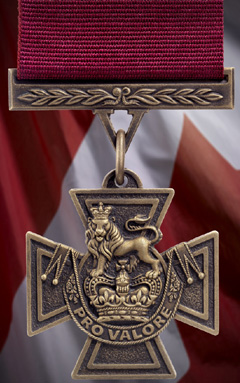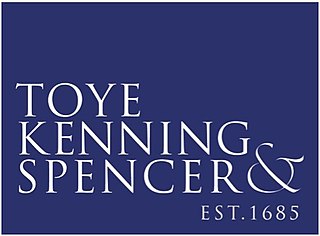This article needs additional citations for verification .(November 2016) |
Gladman & Norman is a private limited company in the United Kingdom that is known for manufacturing awards and insignias.
This article needs additional citations for verification .(November 2016) |
Gladman & Norman is a private limited company in the United Kingdom that is known for manufacturing awards and insignias.
The company was founded in 1910 by two friends, Alfred Gladman and Samuel Norman who met at the School of Jewellery in Birmingham.
Samuel Norman was an artist and designer, and taught for a time at Handsworth Art School. He used his skills to engrave dies for companies in the Jewellery Quarter, and the newly established Gladman & Norman undertook the stamping for these firms.
Norman died in 1919 from complications caused by his service in the First World War, and left his entire estate to Alfred Gladman. Laura and Grace Gladman helped Alfred to run the business and they continued running it after his death, also caused by complications from being gassed during the war, in 1932. The Gladmans sold the business to the Hadley family, who incorporated it as a limited company in 1936.
The company expanded its badge making and produced a vast range of commemorative items with town crests for most of the popular holiday resorts being a major part of the production. The business expanded, and by the time the Second World War broke out, it was producing cap badges for the Armed Forces. During the war years, badge production grew and ran alongside production of parts for aircraft and naval ships. At its peak, the company was producing over 300,000 badges for the government each year.
Following British government's shift to move to aluminium "stay-brite" badges, the company ceased production of Armed Forces cap badges to concentrate on badges for various organizations and events as well as medal and regalia production.
In 2004 the company was purchased by WM Holdings (UK) plc to become the production arm of the group. Under the new directors, the company moved into the production of state insignia and medals for governments around the world, including the United Kingdom, Malaysia, Jamaica, Canada, Jordan, Tonga, Bhutan, St Lucia and others.
Amongst other British medals, the company produces the Insignia of The Royal Red Cross 1st and 2nd Class (RRC) and (ARRC) and the Order of the British Empire 4th and 5th Class (OBE) and (MBE). The company also designed and produced The Elizabeth Cross. [1]
In addition to orders, decorations, and medals, the company also produces a wide range of enamelled badges for car clubs, including MG and Morgan clubs; the Order of St John; state honors, fraternal society regalia; and regimental jewelry, including sweetheart brooches, cufflinks, and tie-pins.

A medal or medallion is a small portable artistic object, a thin disc, normally of metal, carrying a design, usually on both sides. They typically have a commemorative purpose of some kind, and many are presented as awards. They may be intended to be worn, suspended from clothing or jewellery in some way, although this has not always been the case. They may be struck like a coin by dies or die-cast in a mould.

The Crown Jewels of the United Kingdom, originally the Crown Jewels of England, are a collection of royal ceremonial objects kept in the Jewel House at the Tower of London, which include the coronation regalia and vestments worn by British monarchs.

St Edward's Crown is the centrepiece of the Crown Jewels of the United Kingdom. Named after Saint Edward the Confessor, versions of it have traditionally been used to crown English and British monarchs at their coronations since the 13th century.

Totenkopf is the German word for skull. The word is often used to denote a figurative, graphic or sculptural symbol, common in Western culture, consisting of the representation of a human skull- usually frontal, more rarely in profile with or without the mandible. In some cases, other human skeletal parts may be added, often including two crossed long bones (femurs) depicted below or behind the skull. The human skull is an internationally used symbol for death, the defiance of death, danger, or the dead, as well as piracy or toxicity.

The Institute of Heraldry, officially The Institute of Heraldry, Department of the Army, is an activity of the Administrative Assistant to the Secretary of the Army solely responsible for furnishing heraldic services to the President of the United States and all federal government agencies. Title 18 of the United States Code, Chapter 33, Section 704 and Title 32 of the Code of Federal Regulations, Part 507 permit the institute to issue directives on how military insignia are displayed, the criteria for issuance, and how insignia will be worn on military uniforms.

The awards and decorations of the United States Armed Forces include various medals, service ribbons, ribbon devices, and specific badges which recognize military service and personal accomplishments of members of the U.S. Armed Forces. Such awards are a means to outwardly display the highlights of a service member's career.
Chief Warrant officer is a senior warrant officer rank, used in many countries.

A cap badge, also known as head badge or hat badge, is a badge worn on uniform headgear and distinguishes the wearer's nationality and/or organisation. The wearing of cap badges is a convention commonly found among military and police forces, as well as uniformed civilian groups such as the Boy Scouts, civil defence organisations, ambulance services, customs services, fire services etc.

A cross pattée, cross patty, or cross paty, also known as a cross formy or cross formée, is a type of Christian cross with arms that are narrow at the centre, and often flared in a curve or straight line shape, to be broader at the perimeter. The form appears very early in medieval art, for example in a metalwork treasure binding given to Monza Cathedral by Lombard queen Theodelinda, and the 8th-century lower cover of the Lindau Gospels in the Morgan Library. An early English example from the start of the age of heraldry proper is found in the arms of Baron Berkeley.

A peaked cap, peaked hat, service cap, barracks cover, or combination cap is a form of headgear worn by the armed forces of many nations, as well as many uniformed civilian organisations such as law enforcement agencies and fire departments. It derives its name from its short visor, or peak, which was historically made of polished leather but increasingly is made of a cheaper synthetic substitute.

The Victoria Cross was created in 1993, perpetuating the lineage of the British Victoria Cross, while serving as the highest award within the Canadian honours system, taking precedence over all other orders, decorations, and medals. It is awarded by either the Canadian monarch or his viceregal representative, the governor general of Canada, to any member of the Canadian Armed Forces or allies serving under or with Canadian military command for extraordinary valour and devotion to duty while facing hostile forces. The British Victoria Cross was recommended prior to the creation of the Canadian medal. The previous Victoria Cross remains the highest award of the United Kingdom honours system and was also awarded in other Commonwealth countries; although most, including Canada, later established their own honours systems and no longer recommended British honours.

The commander-in-chief of the Canadian Armed Forces exercises supreme command and control over Canada's military, the Canadian Armed Forces. Constitutionally, command-in-chief is vested in the Canadian monarch, presently King Charles III. Since the Letters Patent, 1947, were signed by King George VI, the governor general of Canada—presently Mary Simon—executes most of the duties of the sovereign, including in his role as commander-in-chief. Consequently, the governor general also uses the title Commander-in-Chief of the Canadian Forces. By protocol, the title used within international contexts is Commander-in-Chief of Canada.
The Indian Air Force (IAF), the aerial component of the Indian Armed Forces follows a certain hierarchy of rank designations and insignia derived from the erstwhile Royal Indian Air Force (RIAF).
British Pobjoy Mint was a privately held company-sector mint located in Surrey, England, which produces commemorative coins, medal, tokens and bullion. The mint also manufacturers circulating currency for some British Overseas Territories and sovereign countries including Sierra Leone and Vanuatu.

Toye, Kenning & Spencer is a British jewellery and clothing manufacturer based at Bedworth, Warwickshire; the Jewellery Quarter, Birmingham; and Covent Garden, London.

The Elizabeth Cross is a form of recognition given to the recognised next of kin of members of the British Armed Forces killed in action or as a result of a terrorist attack after the Second World War. It bears the name of Queen Elizabeth II.
Eng Leong Medallic Industries Pte Ltd is a privately owned company based in Singapore, specialising in the manufacture of State and Military Order (honour), Decorations and Medals (ODM) and bespoke gifts.

Troops began wearing berets as a part of the headgear of military uniforms in some European countries during the 19th century; since the mid-20th century, they have become a component of the uniforms of many armed forces throughout the world. Military berets are usually pushed to the right to free the shoulder that bears the rifle on most soldiers, but the armies of some countries, mostly within Europe, South America, and Asia, have influenced the push to the left.
Worcestershire Medal Service, Ltd., established in 1988, is a manufacturer of State honours and insignia. Working with the Ministry of Defence to assist in the licensing of the production of medals, they became the first company to be granted such a licence in 2004. They were granted a Royal Warrant as Medallists to Elizabeth II in 2008.
Thomas Fattorini Ltd is a manufacturing jeweller and designer-maker of awards, trophies, ceremonial swords, civic insignia, medals and name badges. The company is located on three sites in Manchester, Birmingham and London with their head office in Skipton, North Yorkshire.